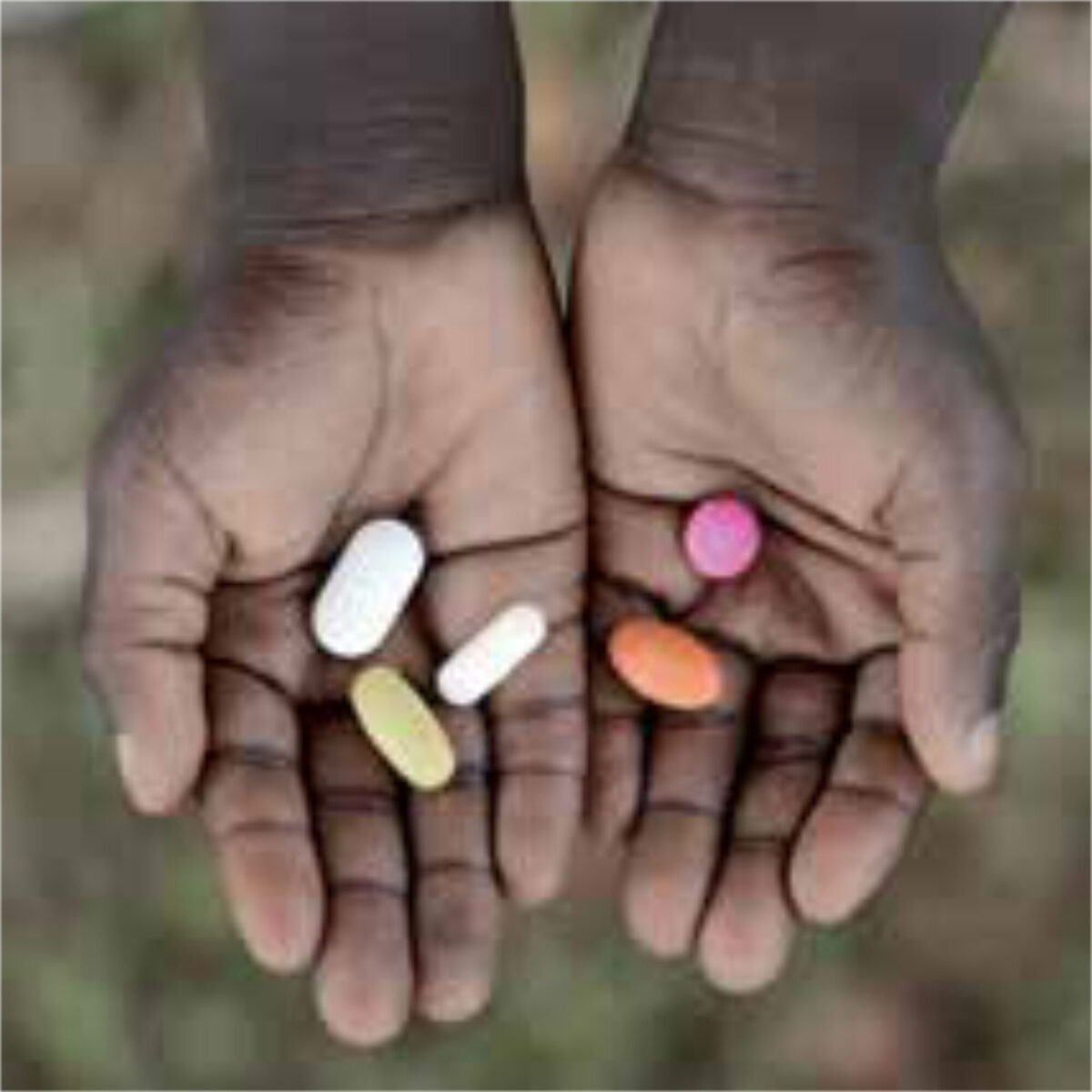Main content
Impact of medication waste
Medications are the most commonly used intervention in healthcare. However, at least one-third of patients end up with unused medication during their treatment, which is then discarded. This medication waste has consider-able implications economically, with an annual financial loss of €100 million in the Netherlands,[1] as well as environ-mentally, with worldwide around 50% of patients discarding medication improp-erly in the toilet, drain, or garbage.[2] This contributes to the 190 tonnes of pharmaceuti-cal residues that reach Dutch groundwater annually,[3] of which 92% is only partly degradable,[4] harm-ing aquatic ecosys-tems and indirectly threatening human health via pollution of drinking water. In addition, wasted medica-tion is produced and distributed unnecessarily which contributes signifi-cantly to carbon emission and climate change. This article focusses on how healthcare providers can prevent the waste of potentially viable medication.

Pharmaceutical supply and use chain
Medication waste refers to any pharma-ceutical product that expires or remains unused throughout the pharmaceutical supply and use chain. Traditionally, the primary goal of this chain is to ensure timely availability of the right medica-tion, with the right quality, for the right patient, in the right dose. Especially at the patient level, however, medication remains unused as patients may be over-supplied or discontinue treatment due to adverse events, lack of efficacy, resolu-tion of the condition or non-adherence.[5]
Since healthcare providers guide patients’ medication use, several opportunities for preventing the waste of potentially viable medication arise.[6]
Medication waste prevention
Around 40% of medication waste is preventable, whereby dispensing medi-cation for a longer period (>3 months) is a significant risk factor for unnecessary medication waste.[7] Thus, regulating the amount of medication that is prescribed to a patient is a potent waste-preventive strategy. Medication supplies can be restricted and tailored to individual patients, thereby preventing the dispens-ing of unneeded or unwanted medica-tion. For instance, smaller quantities can be dispensed to patients starting on therapy or in the end-of-life phase. Another example is to adjust medication refills for quantities that patients still have in stock at home in order to prevent an oversup-ply of medication.
Redispensing unused medication
If, despite preventive measures, medication waste occurs, proper disposal routes can help to mitigate downstream environmental effects. Indubitably, this includes the collection of unused medication by the pharmacy to avoid disposal via household garbage or sewage. Furthermore, redispensing unused medications returned to phar-macies has the potential to contribute to sustainable medication use. Despite public advocation to tackle waste in healthcare, general implementation of medication redispensing is limited. This is mainly due to uncertainties regarding the quality and safety of medication that has been stored at patients’ homes and falsified medications entering the supply chain, giving rise to legal limitations.
Researchers have explored most of these uncertainties and shown that these can be overcome. Firstly, patients are willing to use medication that is returned by another patient if the quality is guaranteed.[8-10] In addi-tion, key stakeholders, including healthcare providers, health authorities, pharmaceutical industry representa-tives and wholesalers are supportive of the idea.[11-12] Secondly, to assure the quality and safety of redispensed medication, sensing technologies could indicate if storage at a patient’s home has been in compliance with the product label, guaranteeing the quality and safety of redispensed medication.[13]
Based on these findings, the Radboud University Medical Centre, in col-laboration with Utrecht University, is currently evaluating the feasibility of a redispensing programme in rou-tine clinical practice. In a multicentre prospective study, oral anticancer drugs that remain unused by patients are redispensed to another patient in need for the same drug.[14] In order to guar-antee the quality, each drug package is dispensed in a sealed bag including a temperature measuring device. The quality of returned drugs is assessed using the following criteria: the sealed bag is unopened, the medication’s outer packaging is undamaged, the remaining shelf life is ≥6 months, and the medica-tion has been stored in compliance with the product label storage requirements.
Besides prevention of waste, medication redispensing has been suggested as a means to counter medication shortages and create a circular pharmaceutical supply and use chain. Therefore, oral anticancer drugs might be among the most eligible candidates for redispens-ing from a financial perspective. In addi-tion, medication redispensing could be considered as a novel strategy to mini-mise the waste of all viable medication.
Conclusion
Medication waste is a burden on society due to its destructive impact on the environment and healthcare budget. Strategies aimed at waste prevention and redispensing unused medication are initiatives that healthcare providers can undertake to achieve the sustain-able supply and use of medication. This requires active engagement on the part of health care providers to implement these initiatives as part of standard care.
References
- Bekker CL. Sustainable medication use. Medication waste and feasibility of redispensing [dissertation]. Utrecht: Utrecht University; 2018. 89 p.
- Kusturica P, Tomas A, Sabo A. Disposal of unused drugs: knowledge and behavior among people around the world. Rev Environ Contam Toxicol. 2017;240:71-104. doi: 10.1007/398-2016-3
- Moermon CTA, Montforts MHMM, Roex EWM, et al. Medicijnresten en waterkwaliteit: een update. Bilthoven: Rijksinstituut voor Volksgezondheid en Milieu; 2020. 90 p. Briefrapport: 2020-0088. doi: 10.21945/RIVM-2020-0088
- Swedish environmental classification of pharmaceuticals FASS: Fass [Internet]. Stockholm: FASS; 2019. Available from: www.fass.se/LIF/startpage?userType=0
- West LM, Diack L, Cordina M, et al. A systematic review of the literature on ‘medication wastage’: an exploration of causative factors and effect of interventions. Int J Clin Pharm. 2014;36(5):873-81. doi: 10.1007/S11096-014-9981-2
- Smale EM, Egberts TCG, Heerdink ER, et al. Waste-minimising measures to achieve sustainable supply and use of medication. Sustainable Chemistry and Pharmacy. 2021 May;20(1):100400
- Bekker CL, Van den Bemt BJF, Egberts ACG, et al. Patient and medication factors associated with preventable medication waste and possibilities for redispensing. Int J Clin Pharm. 2018 Jun;40(3):704-11. doi: 10.1007/s11096-018-0642-8
- Bekker CL, Van den Bemt BJF, Egberts ACG, et al. Willingness of patients to use unused medication returned to the pharmacy by another patient: a cross-sectional survey. BMJ Open. 2019 May 14;9(5):e024767. doi: 10.1136/bmjopen-2018-024767
- Alhamad H, Patel N, Donyai P. How do people conceptualise the reuse of medicines? An interview study. Int J Pharm Pract. 2018 Jun;26(3):232-41. doi: 10.1111/ijpp.12391
- McRae D, Gould A, Price-Davies R, et al. Public attitudes towards medicinal waste and medicines reuse in a ‘free prescription’ healthcare System. Pharmacy (Basel). 2021 Apr 8;9(2):77. doi: 10.3390/pharmacy9020077
- Bekker CL, Gardarsdottir H, Egberts ACG, et al. Redispensing of medicines unused by patients: a qualitative study among stakeholders. Int J Clin Pharm. 2017 Feb;39(1):196-204. doi: 10.1007/s11096-017-0424-8
- McRae D, Allman M, James D. The redistribution of medicines: could it become a reality? Int J Pharm Pract. 2016 Dec;24(6):411-8. doi: 10.1111/ijpp.12275
- Hui TKL, Mohammed B, Donyai P, et al. Enhancing pharmaceutical packaging through a technology ecosystem to facilitate the reuse of medicines and reduce medicinal waste. Pharmacy (Basel). 2020 Mar 31;8(2):58. doi: 10.3390/pharmacy8020058
- Trial NL9208: the ROAD to sustainable medication use: redispensing unused oral anticancer drugs [Internet]. Netherlands Trial Register. 2021. Available from: www.trialregister.nl/trial/9208



















































